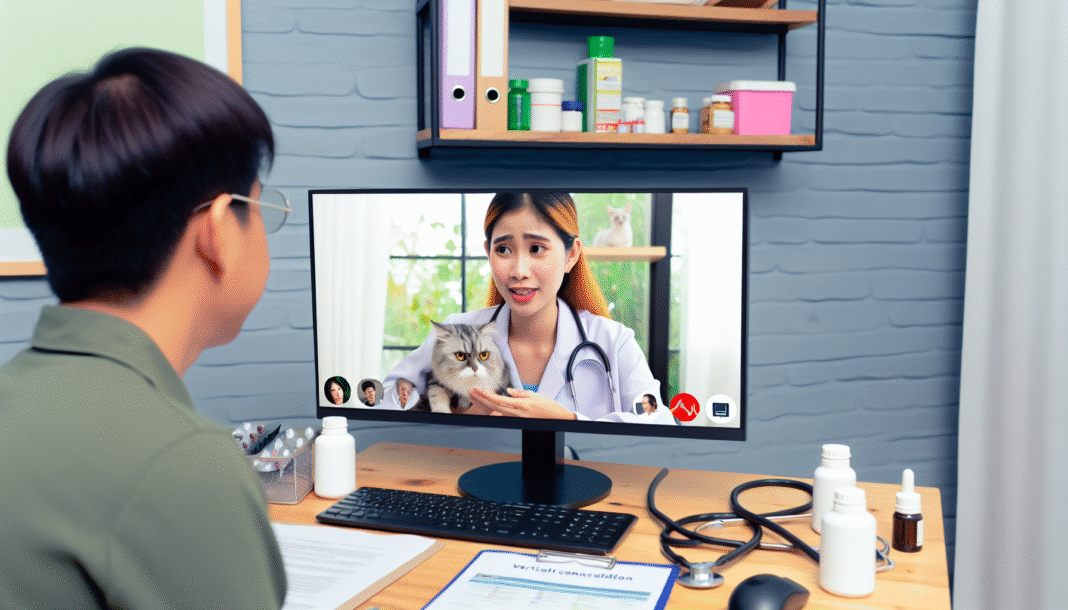As pet ownership evolves, many veterinarians and pet owners are turning to telemedicine to ensure their furry friends receive the best care. This blend of technology and healthcare not only streamlines the process but also enhances accessibility. Here are essential best practices for both veterinarians and pet owners to maximize the efficacy of telemedicine in pet health care.
Understanding Telemedicine in Veterinary Care
Telemedicine refers to the use of technology to provide veterinary services remotely. This can include video consultations, phone assessments, and messaging services. For pet owners, telemedicine can often be more convenient and less stressful than traditional in-person visits.
Why Choose Telemedicine?
- Accessibility: Great for those living in remote areas or with limited transportation options.
- Convenience: Schedule from the comfort of home, reducing stress for both pets and owners.
- Immediate Advice: Quick access to veterinary advice can be crucial in non-emergency situations.
Setting Up a Telemedicine Appointment
For Pet Owners
-
Prepare Your Space: Choose a quiet area with good lighting to ensure clear communication. Keep your device charged and ready to go.
-
Gather Information: Have your pet’s medical history, medications, and any relevant notes handy. This helps the veterinarian make informed decisions.
-
Plan Your Questions: Think about what symptoms have been observed, when they started, and whether any triggers are involved.
-
Use Technology Wisely: Ensure your internet connection is stable and that you use a device with a functional camera and microphone. Familiarize yourself with the telemedicine platform beforehand.
For Veterinarians
-
Create Clear Protocols: Establish guidelines for types of cases suitable for telemedicine, such as follow-ups on ongoing issues.
-
Ensure Privacy: Use secure communication methods to protect pet owners’ information.
-
Educate Clients: Provide clear instructions on how to access and use the telemedicine platform, including troubleshooting tips.
Common Issues Addressed via Telemedicine
Symptoms Assessment
Telemedicine is often utilized for a variety of symptoms, including:
- Vomiting or Diarrhea: Discuss the frequency, appearance, and any dietary changes.
- Coughing or Sneezing: Share any accompanying symptoms like lethargy or changes in behavior.
- Skin Issues: Capture clear images of rashes, lumps, or other skin abnormalities.
Diagnosing Pet Conditions
While some conditions may necessitate an in-person visit, many can be assessed through telemedicine:
- Ear Infections: Owners can describe symptoms, and visuals can be shared for better evaluation.
- Behavioral Concerns: Discuss changes in mood or behavior to identify potential health issues.
- Dental Problems: Share photos of your pet’s teeth and gums for preliminary assessments.
Treatment Plans and Prescriptions
For Pet Owners
-
Follow Instructions: Carefully follow the treatment plan provided by your veterinarian. This may include medication dosages and frequency.
-
Monitor Progress: Keep a log of any changes in your pet’s condition, and be ready to report back during follow-ups.
-
Ask Questions: Don’t hesitate to clarify anything you don’t understand about the treatment.
For Veterinarians
-
Tailor Treatments: Offer customized treatment plans based on the pet’s specific needs and the pet owner’s lifestyle.
-
Document Everything: Keep thorough records of consultations and treatments prescribed, as this can be invaluable for follow-up care.
-
Follow-Up Appointments: Schedule regular check-ins to monitor the pet’s condition and adjust treatment plans as necessary.
Integrating Telemedicine with In-Person Visits
When to Seek In-Person Care
Telemedicine is effective for many situations, but some cases require thorough examination or urgent care:
-
Severe Symptoms: If your pet shows signs of distress, such as difficulty breathing, seizures, or severe bleeding, seek immediate in-person care.
-
Treatment Limitations: Conditions like suspected fractures or complex diagnostics may require physical examination or imaging.
Hybrid Appointments
Combining telemedicine with traditional visits can optimize pet care. For example, a follow-up consultation via telemedicine can help assess the effectiveness of previous treatments before scheduling an in-person appointment if necessary.
Practicing Preventive Care through Telemedicine
Health Monitoring
Regular check-ins can help maintain your pet’s health:
- Weight Management: Discuss home weight management strategies and ask about appropriate diets.
- Vaccination Reminders: Maintain a schedule for vaccinations and preventive care through regular virtual check-ins.
Behavioral Training
Utilizing telemedicine for behavioral issues can also be effective. Virtual consultations can provide owners with strategies to address anxiety, aggression, or other behavioral problems without needing in-person consultations.
Practical Tips for Effective Telemedicine
-
Be Timely: Arrive at your appointment on time, as the veterinarian will have a schedule to adhere to.
-
Stay Calm: Your pet may pick up on your anxiety. Stay calm and reassure them to encourage a more focused consultation.
-
Follow-Up: After your appointment, follow the veterinarian’s advice. If problems persist or worsen, do not hesitate to schedule another appointment.
By following these best practices, both veterinarians and pet owners can ensure that telemedicine serves as a valuable tool in managing pet health care effectively and efficiently. Embrace the technology, remain informed, and always prioritize the health and wellbeing of your furry companions!





